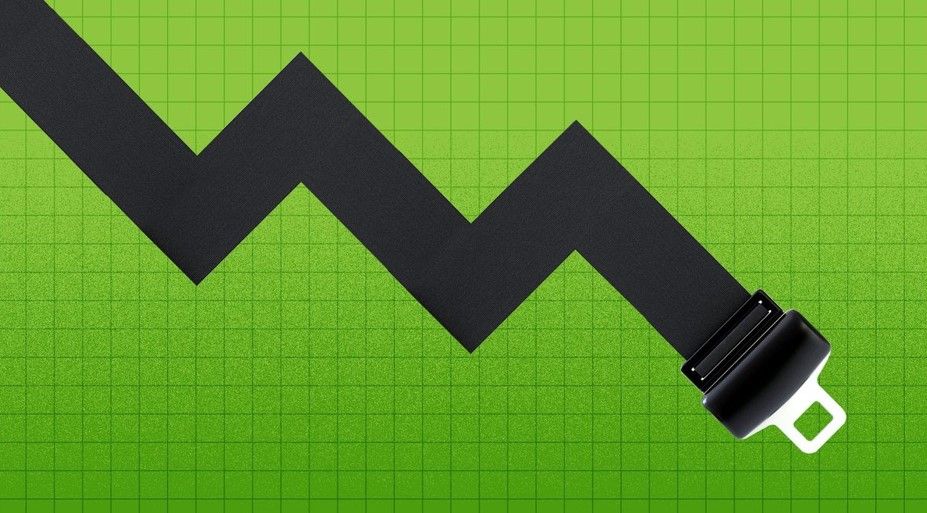Credit Managers’ Index (CMI), eNews
2024 Economic Forecasts Are Mixed

The global economy faced severe headwinds in 2023 that tested its resilience—a banking crisis, tight monetary policy and some of the worst geopolitical tension seen in years. Many countries demonstrated strength while navigating these challenges and performed much better than expected, but others succumbed to economic instability. A recent eNews poll revealed more than two-thirds of credit professionals believe a recession is around the corner if we are not in one already, while 31% see the chance of a soft landing.
Let’s take a look at the events that shaped the financial landscape of this past year and what lies ahead.
Positive Economic Outlook?
Economists view the 2024 economy as a tossup with 50% recession odds, according to a survey from the National Association of Business Economics (NABE). Some are optimistic that the U.S. will avoid a recession again in the New Year while others fear the risk is too great.
“The U.S. economy defied recession fears in 2023 and made substantial progress toward a soft landing,” reads a report from Goldman Sachs. “The key surprise has been much stronger than expected GDP growth, though this has not prevented the labor market from continuing to rebalance or inflation from continuing to fall.”
The worst part of the storm of rate hikes and fiscal policy has likely passed. The Federal Reserve is expecting to cut interest rates in 2024 as inflation and the job market have cooled. “We think most of the impact of higher interest rates is already behind us, and the impact yet to come—in particular from the looming corporate debt maturity wall—will be modest,” according to Goldman Sachs. “It was fair to wonder last year whether labor market overheating and at times unsettling high inflation mindset could be reversed painlessly. But these problems now look largely solved, the conditions for inflation to return to target are in place, and the heaviest blows from monetary and fiscal tightening are well behind us. As a result, we now see only a historically average 15% probability of a recession over the next 12 months.”
Risks Remain
Despite this positive news, several risks remain that could change the economic path. Geopolitical conflict is a top concern for experts with the escalating Israel-Hamas and Russia-Ukraine wars. If tensions between China and Taiwan boil over, it could spell major trouble for the global economy—especially if any war leads to an oil crisis. “[T]he U.S. economic outlook over the next year or so is far from sunny. A full-blown economic storm may not develop, but storm clouds likely will dominate the horizon for the foreseeable future,” economists at Wells Fargo said in their 2024 outlook.
Sovereign debt is also on the rise, and the House and Senate have nearly sent the U.S. into a government shutdown several times in 2023. “[Speaker Mike] Johnson has promised he won’t put another ‘clean’ funding bill on the floor, increasing the chances of a shutdown after the next spending deadlines on Jan. 19 and Feb. 2,” reads an article from Politico. “The House GOP is so bitterly divided that some lawmakers worry they’ll engage in the same last-minute self-sabotage that plagued them this fall.”
Commercial bankruptcies have skyrocketed since the historical lows during the height of the pandemic. In the third quarter of 2023, business bankruptcy filings rose 36% from a year earlier according to the United States Courts. Chapter 11 filings year-to-date through September are at their highest level since 2020, but if we look beyond the year the pandemic started, filings are at their highest level since 2013. The rise in business failures is expected to get worse in 2024 as companies grapple with a combination of weakening demand, sticky inflation and high borrowing costs. An NACM eNews poll revealed that 40% of credit professionals have seen an increase in the number of customers filing for bankruptcy in the last year.
Credit Professionals Should Prepare for All Scenarios
These last few years have proven that the economy can take a turn at any moment. Credit professionals must prepare for any and all scenarios in order to mitigate risk for their companies. In mitigating any type of risk, credit professionals should always refer to standard know-your-customer practices. Building a strong relationship with your customer is key to staying ahead of the curve in any circumstance.
“Draw your customer into deeper conversations about their business so that you learn about how their business is financed,” said Jay Tenney, managing director at Trade Risk Group (Irving, TX). “Know what the customer’s business plan is to address any possible difficulties in collecting in case of a slowdown in their market or how to manage the cashflow.”
Always take a proactive approach to risk mitigation. Creditors should take a closer look at their customers to figure out the amount of risk around tighter lending conditions and how that impacts customers’ ability to pay in a timely manner. “Growth and expansion of businesses is expected to remain in 2024, however, companies will still have to refinance debt and do so at higher rates,” said Martin Zorn, managing director of risk research and quantitative solutions at SAS Institute Inc. (Honolulu, HI). “Even if we see the Fed make a few cuts, interest expenses are going up. And because of higher rates, many banks were comfortable with excess deposits, mostly from COVID policies. Banks have become conservative with their lending.”
The November Credit Managers’ Index (CMI) revealed credit managers are growing increasingly concerned about the state of the economy, citing more delinquent accounts, poor application quality and more bankruptcy filings. “I think bankruptcies are going to continue to rise in the next year,” said NACM Economist Amy Crews Cutts, Ph.D., CBE. “A lot of business loans are short-term loans. Now they are coming due, and a lot of companies simply cannot repay them. The bankruptcies are being driven by the companies who have overextended themselves and can’t possibly get the loans refinanced.”
The December CMI is NOW OPEN. Complete the CMI every month for the next 12 months and automatically be entered into a drawing to win a gift card worth between $100-$250 in 2024. Sign up to receive monthly CMI survey participation alerts. For a complete breakdown of manufacturing and service sector data and graphics, view the November 2023 report. CMI archives also may be viewed on NACM’s website.





